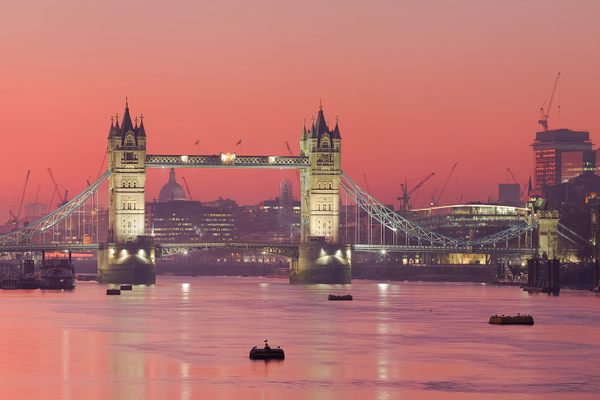London Creates Its Own Clouds
Scientists discovered that large cities produce enough heat to change the atmosphere.

If you type in “why is london” into Google search, the second suggested search—after an inquiry about the dish called a London broil—is “why is London always cloudy.” The sagging clouds that frequently hang over the British city have become as much a landmark as Big Ben or the Queen’s corgis. In April 2018, Londoners lasted a whole, depressing week without seeing a single hour of sunshine. Now, scientists have come closer to cracking the code of why London has such gloomy weather forecasts. Apparently the size and architecture of megacities allow them to produce their own clouds, according to a new study published in npj Climate and Atmospheric Science.
The researchers studied satellite imagery of London and Paris and found a notable expansion of cumulus cloud coverage during the late afternoon and evening compared to more rural surroundings. This observation surprised researchers, as cities’ lack of significant vegetation should make them drier, theoretically resulting in less evaporation and, ultimately, less clouds.
But according to the study’s findings, it all comes down to the energy of a bustling metropolis. Large cities produce much more heat than less developed areas, such as a meadow or farm. This energy comes from buildings and traffic, writes the study’s lead author Natalie Theeuwes, a research assistant at the University of Reading, in an email. As this hot air rises and eventually cools, the moisture inside the air condensates and forms clouds. This excess production of heat allows cities to form larger, bigger patches of cloud coverage that also last longer than clouds over rural areas. So clouds tend to linger in afternoons and evenings, times when they would have otherwise dissipated.“While the rural surroundings start to cool and there is no more energy for these updrafts, clouds die out,” Theeuwes says. “But over the city there is still heat and energy available at the surface to maintain these clouds.”
Cities interact with the atmosphere in numerous ways. Perhaps the best-studied, Theeuwes says, is the urban heat island effect, the phenomenon where cities have a higher air temperature at street level around twilight than surrounding areas. But researchers had never before looked into how cities influenced other forms of weather, Theeuwes says, adding that these city-made clouds likely exacerbate the urban heat island effect by making it more difficult for cities to cool off. Though the study focused just on London and Paris, Theeuwes says these persistent clouds have been observed in other cities with an abundance of extra heat, such as Sacramento, California, and Łódź, Poland.











Follow us on Twitter to get the latest on the world's hidden wonders.
Like us on Facebook to get the latest on the world's hidden wonders.
Follow us on Twitter Like us on Facebook